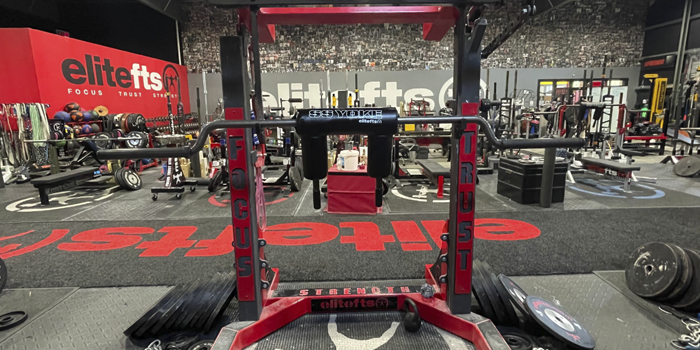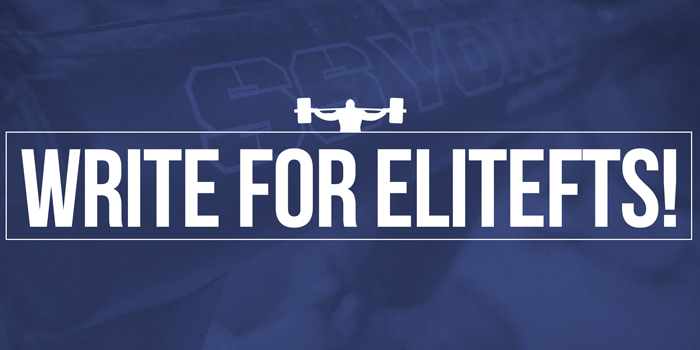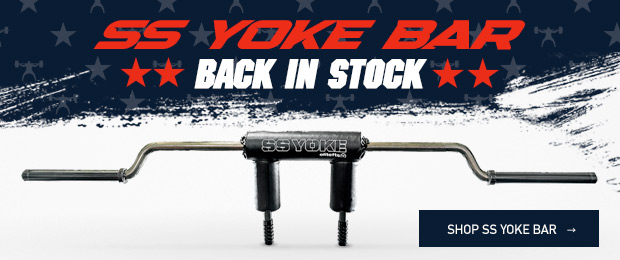
I will tell you exactly why the Safety Squat Bar is superior today from my own experiences and actual training process. No regurgitated crap from a book, study, or some scholarly article. Many times anything we read is what anyone else can read in the industry, and good for you that you can quote books out in the open all the time. Too many times I have met coaches at various levels who could tell you anything from Starting Strength because that is probably the first book they just read or they read random excerpts from Twitter and Instagram and use that information in daily conversations.
It baffles me, to be honest. I am sure if you are reading this you can understand where I am coming from. I want a real life application and a real life story.
So, I wanted to take a different approach compared to my last two articles with elitefts. Not only did I want to show why this bar is superior, but also to show how it can become one of your best co-coaches on your staff.
Why Use the Safety Squat Bar (SSB) From elitefts?
- Beginners to Advanced: No matter the training age, I have had so much success in using an SSB to integrate and teach the squat and box squat pattern to new athletes. If you are an advanced lifter, we all know it will continue to be a tool for you.
- Variation in Training: You can create variation with the SSB just as you would with any other movement. But, you open yourself up to more movements because of the comfortability for athletes and clients.
- Results: I have seen such an increase in our squats in general as we use the SSB. These increases are more for athletes 11 to 18 years old. The increase in strength carries over to Key Performance Indicators (KPI) such as vertical jump, sprinting, broad jumps, etc. It has been an even better result for us as teachers, which I will explain in a bit.
I think these are very common things that the SSB can help with, and I am sure many coaches and trainers will agree. But, the one thing that many might not think of is that the SSB will be one of your best co-coaches on your staff.
Recent: A Guide to Effective Sled Sprint Training
Time and time again, the SSB proves to be a great tool to use in your program. As so many of us have seen over the years, especially with new athletes and even those with little training age experience, the squat brings out the nervousness in athletes. The SSB will make athletes feel drastically more comfortable in their squat patterns and even good mornings because of how the weight is distributed as well as the padding that is added. I do not have any fancy numbers or studies, but the more and more the SSB has been instituted in our programming, the more kids have loved it at every level of training.
I know over the last month specifically, we have had over 15 new athletes come to us who have never performed a squat or have very little experience in general. We utilized a box squat protocol as well as a slant board protocol, all with the Squat Safety Bar being our main bar of choice. Without hesitation, the new athletes, you could tell, felt more comfortable with the SSB as we began our squat program for them. The comfortability factor is huge for new athletes. I can tell how much easier it is to first teach a box squat or squat with an SSB bar compared to a regular barbell squat.
Squat Safety Bar: More Bang For Your Buck
Positioning
The design of the SSB typically encourages a more upright torso position compared to a barbell squat. You will have a more upright torso position compared to a barbell squat. This is because of the cambered design of the SSB. I believe that this allows athletes to understand their positioning in the SSB squat compared to a normal barbell squat. It also allows athletes a quicker way to learn and be comfortable in this position as they learn how to squat.
Spinal Loading and Load Distribution
The SSB may reduce lumbar spine loading because of the upright torso positioning as well as how the bar is distributed across the back and shoulders evenly. It will place the distribution of weight across the upper back and shoulders and utilize a more neutral grip while holding the handles placed in front of the SSB. I think this is crucial because the majority of times people barbell squat, they complain of how their lower back hurts or how their shoulders or upper back feel during a squat. The hand positioning of a barbell squat is not a natural place to be, and over time, it wrecks your shoulders.
Muscle Activation
The SSB can activate the erector spine and upper back muscles to a greater extent because of the need to stabilize the bar on the shoulders. Additionally, the quadriceps may be more engaged in SSB squats due to the upright posture.
Final Thoughts
For those who are hesitating to buy SSB bars, let me put you on notice. Safety Squat Bars need to be in your arsenal of equipment at your gym. If you worry you will not use them enough, please reach out, and I will tell you how much we truly use them at Legacy at Carbon!
Bryce Biel is the Director of Performance for Legacy at Carbon in Franklin, TN, and the Head Coach of the Tiger Fitness Training App. Biel trains youth athletes, collegiate athletes, and professional athletes in person and online. You can contact Bryce via email at Bryce@LegacyatCarbon.com. Social Media (Twitter/Instagram) @BryceBiel. You can find Legacy at Carbon at www.LegacyatCarbon.com.











My only peeve with this bar is people using handles and levering the bar in the hole to eliminate the camber and cheat the lift. Best use of this bar is with no hands.
https://www.youtube.com/watch?v=BFqm_pLxDPU
Shoulder surgery - SSB
Bicep surgery- SSB
Pec surgery- SSB
These are some of the surgeries myself and my training partners have had. And yet, we were all able to stay under the bar squatting throughout the process due to the Safety Squat Bar.
It’s the best $400 investment made.